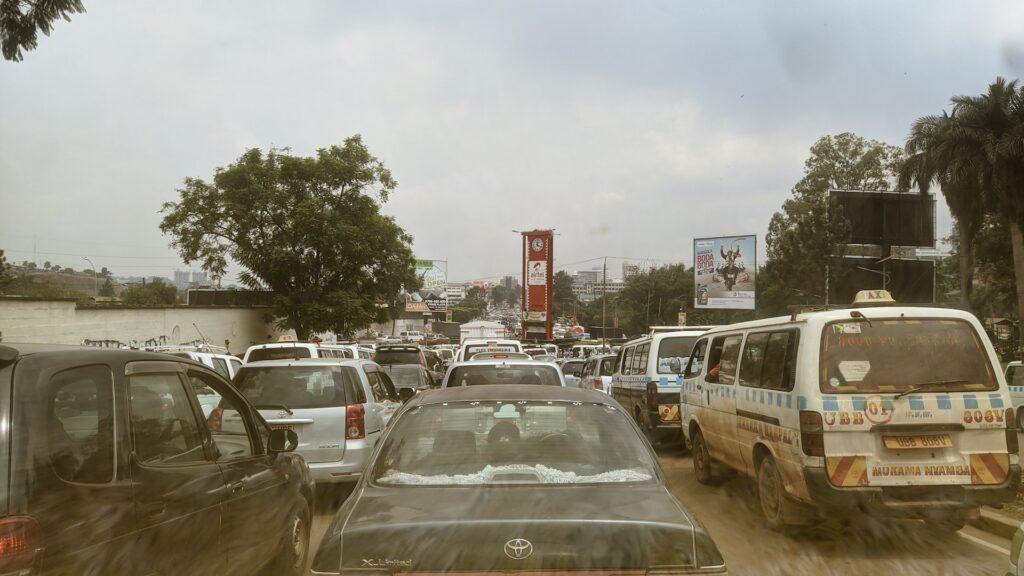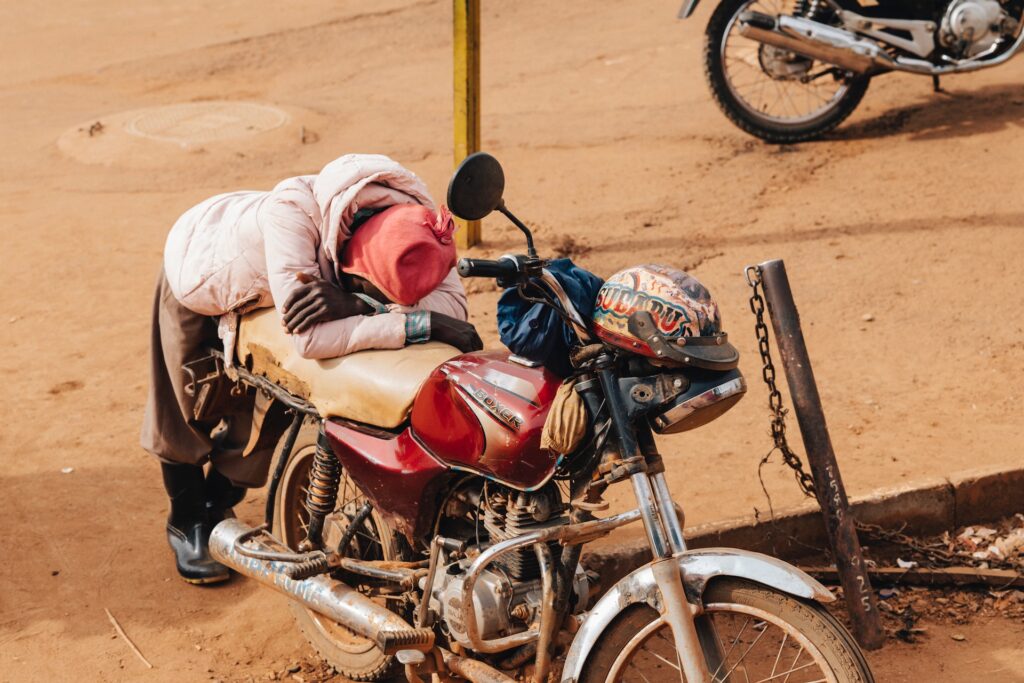Table of Contents
- What is the currency in Uganda?
- Is traveling in Uganda expensive? The cost of travel in Uganda 2023
- Is traveling in Uganda expensive? Summaries and recommendations
Is traveling in Uganda expensive in 2023? Allow me to explain.
If you’re planning a trip to Uganda in 2023, you might be wondering if traveling in Uganda is expensive for tourists.
The great news is I’m going to talk you through everything you need to know about how much travel costs in Uganda so you can budget for your upcoming trip without getting any unwelcome surprises when you arrive!
According to BudgetYourTrip, Uganda is the fourteenth most expensive country in Africa to travel in, and they recommend a budget of $49.00 per day.
While this might be a decent place to start, it’s important to recognize one important truth: Travel in Uganda is as cheap, or as expensive, as you want it to be.
As such, traveling in Uganda is a delicate balancing act. You need to think about comfort and safety, but equally, you might not want to pay over the odds for exclusive travel when there’s a budget option available.
This post is fairly comprehensive, so I’ve decided to break it down into several sections to make your life that little bit easier. I hope you find this guide useful, and if you have any questions, you can leave a comment at the end, and I’ll get back to you!
What is the currency in Uganda?
Before I start talking about costs, you should be aware that the currency used in Uganda is Ugandan Shillings. Many hotels are willing to accept payment in US Dollars, but GBP and Euros are less commonly accepted.
When paying for transport and generally moving up and down the country, you will need to pay in Shillings.
You won’t be able to get shillings before you arrive in Entebbe, so make sure you have some money to change at the airport or in Entebbe town. You can also withdraw money from an ATM if you prefer.
At the time of writing this post [November 2022], the currency rate was as follows:
$1.00 = 3,800 UGX
Note that the value of the Shilling changes a lot, so make sure you double-check the current exchange rate before arriving.
I’m going to list all prices in this post in USD just to make things easier. Please note these prices are all subject to change.
In your experience, you may even find markedly different prices to those I list here. If you do, please make a note of this in the comments.
I will provide links to my sources where possible unless the costs are from my personal experience. And in that case, you’ll just have to trust me!
So, without further ado, let’s dive in and answer the question – is traveling in Uganda expensive for tourists in 2023?
Is traveling in Uganda expensive? The cost of travel in Uganda 2023
I’m not going to get into international flights, visas, or inoculation prices; those will be covered in a separate post. Here I’m only concerned with the cost of travel when you actually arrive in Uganda.
Internal flights
Many tourists seek out internal flights to take them from Entebbe to their desired destinations, ‘up country.’ This is fair enough, as many of the national parks in Uganda are located at the extreme ends of the country [Bwindi & Kidepo being prime examples].
Internal flights within Uganda are operated by Aerolink, and if you’re traveling independently, you should make your reservation through their website. The booking process is incredibly straightforward.
Here’s a link to Aerolink’s flight timetable, and you can see how often they fly to each tourist destination. They don’t publish the cost of their flights on their website, and you will have to complete a search to find out the prices.
But to give you a rough idea of what to expect here’s an example:
To fly from Entebbe to Kihihi [the airstrip that serves both Queen Elizabeth NP and Bwindi] in March 2021, it would cost me $236.00 each way. So, for a round trip, I’d be looking at $472.00.
The flight takes just over an hour and is an excellent way of seeing the country from above. I took my first flight with the recently established Bar Aviation, and I was super impressed with their service. They have emerged as competition to Aerolink, which will hopefully drive down the cost of flights in the near future.
Buses
If flying is out of your price range, you could consider taking a long-distance bus from Kampala to your destination up-country. I’ve taken many buses in Uganda on various routes, and I’m not a huge fan.
This is because I’m 6ft3 and heavy-set, so they’re pretty uncomfortable for me! Here’s a brief summary of what to expect from Uganda’s buses:
[Please note, I haven’t traveled on a bus in Uganda since COVID-19, so some of the SOPs might have affected the overall bus experience!]
- They leave when they’re full, regardless of whether they tell you they will leave at a specific time.
- You won’t have much legroom at all, as seats are tightly packed together.
- There is no toilet on board.
- It can take hours to leave Kampala. [On my most recent night bus journey from Kampala to Kanungu, the bus left the station at 8 pm and was still in Kampala’s infamous jam at midnight].
- Uganda doesn’t have the best road safety record in the world, and bus accidents are relatively common. That being said, the Daily Monitor reported in 2015 that incidents were declining thanks to improved road safety.
- Prepare to have your personal space invaded by other people and their luggage.
- Don’t make any plans for the day or night of your intended arrival, as you are likely to be late. And you will need to rest and recover from the journey.
- There’s no such thing as first class on a Ugandan bus.
With all this considered, buses in Uganda are cheap and the best way to travel if you’re on a budget. To use the same example as the Aerolink flight, if I wanted to travel from Kampala to Kihihi [8-12 hours travel time depending on traffic and mechanical issues], it would cost approximately $11.00.
When public transport returned after the COVID-19 lockdown, the cost of the same bus ticket doubled and was $22.00, as buses were running at half capacity.
So if you’re planning on taking this bus in 2021, expect to pay somewhere between $11.00 and $22.00 for your ticket!
All buses are run by private companies with names like Savannah, Global, and Star Link. The best way to book a bus is to head to the bus park in Kampala and buy a ticket directly from the relevant office.
Just tell someone when you arrive at the park where you’re traveling to, and they will point you to the relevant booking office. Although it’s organized chaos, you’ll find what you’re looking for with a bit of patience.
Private hire

If you’re traveling independently in Uganda [i.e., your trip isn’t being arranged by a tour company], you can hire a driver to take you to your desired location for a pre-determined price.
Here’s an important point: everything in Uganda is subject to negotiation, particularly when it’s related to travel.
When you first approach a driver and ask him/her to take you to a specific location, be prepared to negotiate. Some cars in Uganda are in horrendous mechanical condition, so you need to make sure you trust the driver that you hire.
If you’ve never been to Uganda before, the best thing to do if you’re interested in organizing a private hire is to book it through your hotel or hostel.
Failing that, you could book through a tour company. I would personally recommend AJ Tours and Travel, a small-medium-sized tour company based in Kampala.
They’re super friendly, and the manager, Andrew, actually helped me buy a car earlier this year. They can arrange a private hire to take you anywhere in Uganda at a reasonable price.
Again, using the same example of a journey from Kampala to Kihihi, AJ Tours could arrange a private hire for you for $100.00 per day, which includes a vehicle and driver. Be aware that you have to pay for your fuel on top of this price and will need to fuel the vehicle to return to KLA.
While this is an expensive option if you’re on your own, if there’s a group of you, it actually works out as a good deal and is much more comfortable than the bus.
In 2020, a new app was launched called SafariShare, which is essentially a platform where you can request a ride from one location to another for a small fee. I’ve seen it advertised on Ugandan TV a few times, but I’ve never used it.
The premise is certainly a good one, and it could be worth downloading to check it out if you’re looking to share a ride while in Uganda.
Self-drive/Car rental
For those of you that fancy an adventure, renting a car in Uganda is exactly that.
It takes a brave soul to get behind the wheel in Kampala. In fact, I think the first time I drove in Kampala was in 2016, and I still have nightmares about it.
However, if you avoid Kampala and hit the highway, driving in Uganda is great fun. You just need to be careful, as I’ve already mentioned that road safety in Uganda isn’t the best.
But before I give you some tips for driving in Uganda, let’s talk about the cost.
I’ve rented a Rav4 from RoadTripAfrica on several occasions, and I couldn’t recommend them highly enough.
Their service is incredible, and I’ve genuinely never had a mechanical problem with a car that I’ve rented from them. They have lots of different vehicles you rent, starting with a Rav4 and going all the way up to a Land Cruiser.
The cheapest deal they currently have offers a Rav4 at $46.00 per day, which includes roadside assistance and insurance.
Petrol in Uganda is currently about $1.80 – $2.00 per liter.
Renting a vehicle is an excellent way of seeing the country and gives you the chance to arrange your own safari [which saves you a heap of money and is generally amazing]. I’ll write about this in detail in a future post.
Here are some of my tips for driving in Uganda:
- Don’t speed. Even though you will be presented with vast swathes of empty roads when you’re out of Kampala, don’t be tempted to break the speed limit. Here’s why:
- Potholes. Trust me; they’re like craters.
- Cows and other animals regularly saunter into the middle of the road.
- The traffic police utilize speed guns and are good at hiding.
- The speed bumps are enormous, and if you don’t see them, you could wreck your car.
- Buses travel faster than the speed of sound [they don’t, but they go way too fast].
- People overtake recklessly, even on blind bends.
- Trucks are a nuisance and are either driving too slow or too fast. And they’re commonly overloaded.
- You get the point – the roads are tricky if you’re not used to them. Stick to the speed limit.
- Regularly check your oil and water. Get into the habit of doing this every time you stop for fuel. Also, check your tire pressure every time you refuel.
- Carry your permit at all times when driving. It’s common in Uganda for the traffic police to pull you over just to check your license. Make sure you have it on you, or you’ll get fined.
If you’re up for it, driving yourself would be my recommendation, but you need to be careful. It’s not for the faint-hearted.
Public taxis and boda-bodas

If you spend any time at all in Kampala, the chances are you will need to take either a taxi or a boda-boda.
What on earth is a boda-boda, I hear you ask?
It’s basically just a motorbike taxi. You hop on the back, and the driver takes you where you want to go [usually]. They are notoriously dangerous in Kampala, but initiatives like SafeBoda have improved safety in recent times.
It’s basically just a motorbike taxi. You hop on the back, and the driver takes you where you want to go [usually]. They are notoriously dangerous in Kampala, but initiatives like SafeBoda have improved safety in recent times.
Boda-bodas are more expensive than public taxis, but they’re more convenient, too, and get you to where you need to go more quickly.
People don’t tend to use boda-bodas for long journeys and usually just go short distances within the city. They’re also a common way of getting around in rural areas and provincial towns and are useful if you don’t have a vehicle.
It’s really hard to tell you the price of a boda-boda journey because they vary enormously. However, for a journey of up to 5km, you could expect to pay somewhere between $2.00-5.00, depending on how good you are at negotiating.
As for public taxis, I prefer not to use them.
I should note that taxis in Uganda are shared minibusses that leave when they’re full. I don’t really understand their pricing structure, but it seems to depend on where you go.
Taxis shuttle people around Kampala, but they also take you to various locations outside the city.
I remember taking a taxi from Kampala to Jinja one time and regretting it immensely. It was just too hot and crowded for my liking, but it was super cheap, which was one positive.
For taxis in and around Kampala, don’t expect to pay more than $2.00 for short distances. If you’re heading out of the city, be sure to ask the price before you board.
I regularly use boda-bodas, as I find them much more comfortable than taxis, but I know lots of people don’t use them because of their dubious safety record.
If you’re using a boda-boda, bear the following in mind:
- If you can, book through an app like SafeBoda. You will get a better price and a better quality motorcycle.
- Always wear a helmet. If your driver doesn’t give you one, find another rider. If you’re around for a while, it’s a good idea to buy one for yourself and carry it with you.
- If you’re negotiating on the street, check the quality of the boda before you get on. If it looks like it could collapse at any minute, find another driver.
- You need to negotiate the price. Never accept the first price they give you. It’s always going to be considerably less than they quote initially.
- Avoid traveling on bodas in the rain. Obviously, you will get wet, but the roads are extremely dangerous when slippery. I’ve fallen off a boda once, and it was after a heavy rain storm.
Generally speaking, only use taxis and boda-bodas in and around towns and cities. For traveling further afield, use one of the other options I’ve listed.
Is traveling in Uganda expensive? Summaries and recommendations
So, is traveling in Uganda expensive for tourists in 2023?
I would say it’s as expensive or as cheap as you would like it to be.
For instance, you can get from Kampala to Bwindi for $20.00 or less using the bus. The same trip would cost you more than $200.00 on an internal flight.
Here are my recommendations:
For budget travelers: Uganda provides a range of cheap transport options for budget travelers. If you utilize taxis in towns and cities and travel on buses from place to place, your dollars can go a long way.
For mid-range travelers: If you have a little more money to spend, I’d recommend hiring a car for the duration [or at least part] of your trip. Fuel isn’t too expensive, and you have the freedom a car affords you; just be careful not to speed.
For you lucky people who don’t need to worry about money: If money isn’t an issue, hop on an internal flight and see the beauty of the country from above. You can then hire a private car and driver to take you from place to place.
So, there you have it, your ultimate guide to the cost of travel in Uganda in 2023!
If you have any comments or recommendations for other travelers, please do let me know in the comment section below.




